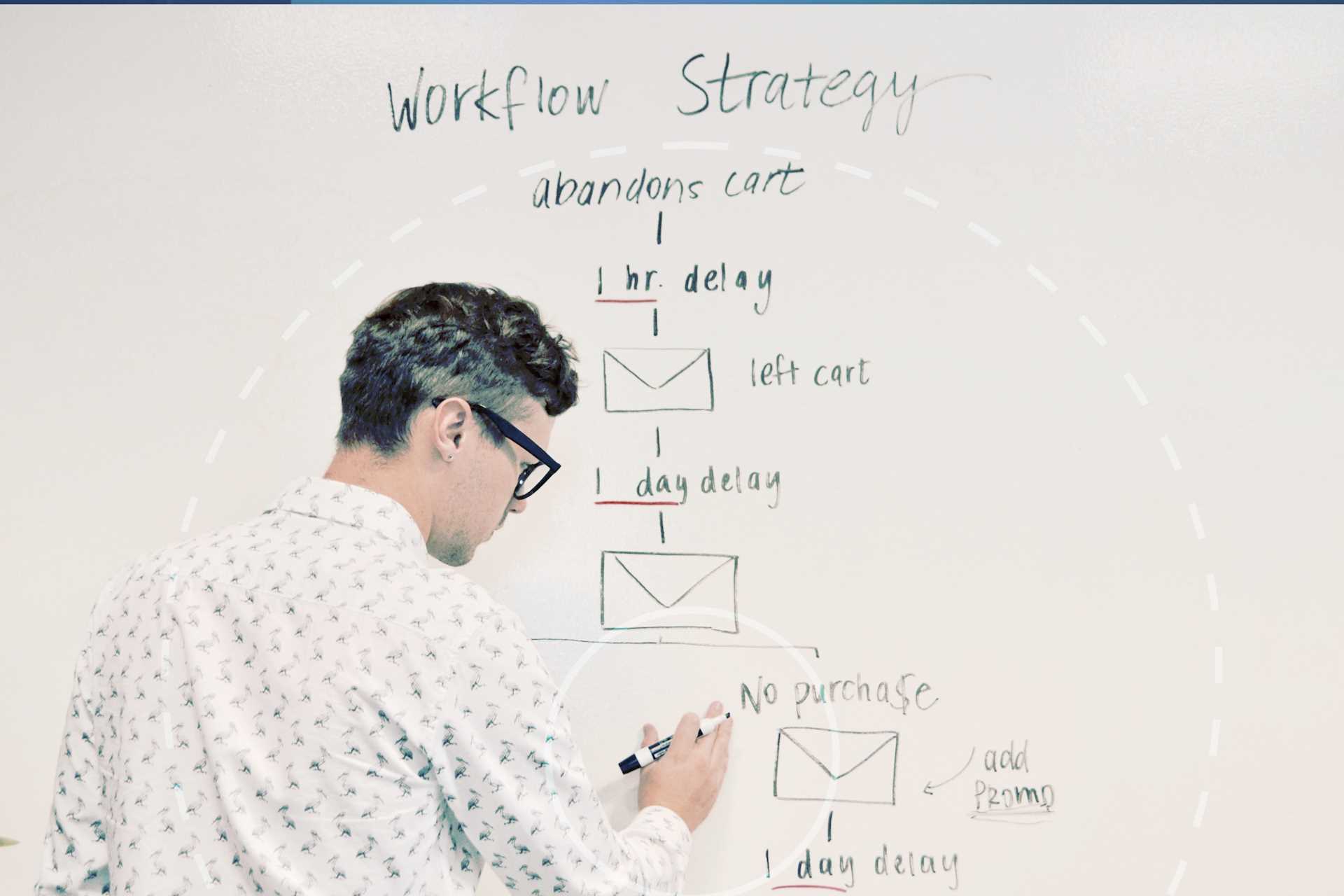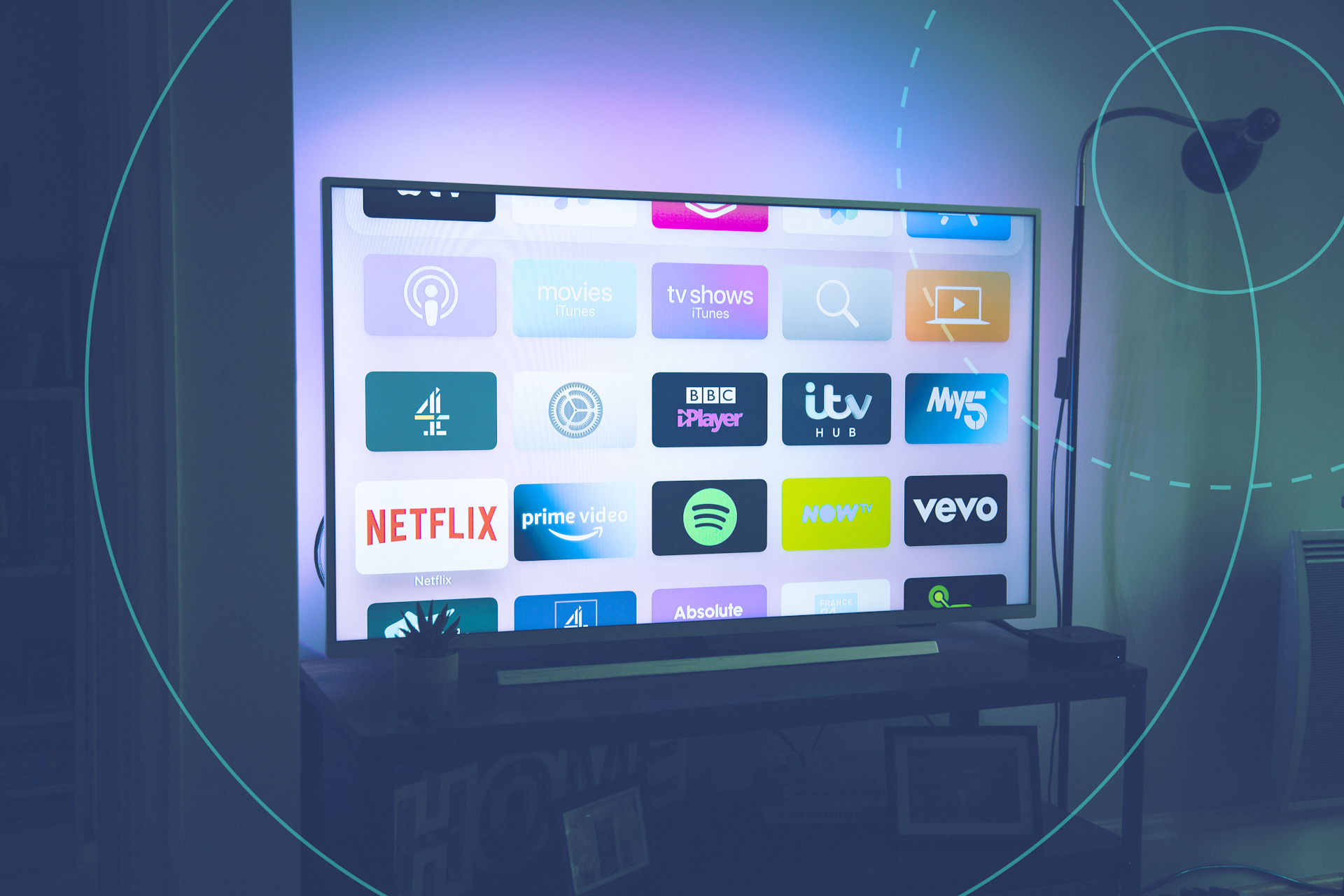Everything you need to know to build a loyal brand following and drive growth
Advertising is constantly changing, but one factor has emerged as a powerful force driving brand awareness and sustainable growth: demand generation. Demand gen is the strategic approach to creating interest in products or services and nurturing that interest throughout the buyer’s journey, playing a pivotal role in converting leads into loyal customers.
In this article, we will shed light on the transformative impact of demand generation and delve into strategies that can unlock your brand’s potential. From targeting key metrics to unleashing advanced strategies, we will guide you through the intricacies of demand gen and how you can empower your brand to thrive.
Demand generation vs. lead generation
A brand’s end goal is to drive sales. That’s ultimately why they advertise. But before they get to lead generation, or lead gen (which is where they convert potential customers into actual customers), we have to start with demand generation, or demand gen.
But what is demand generation?
This of it this way: Before someone will be willing to buy from your brand, they have to know it exists. You need a way to introduce the consumer to your brand in a way that begins to build trust, a factor that 81% of consumers say greatly influences their purchasing decisions. That’s demand gen.
Demand gen is an investment in your brand’s future. Today’s audiences are more marketing-savvy than ever before. And consumers are overwhelmingly distrustful of brands. That’s where demand generation comes in. Demand gen introduces your brand, educates consumers about its benefits, and then … leaves. Demand gen isn’t about closing the deal; it’s about welcoming the consumer into your marketing funnel and leaving them room to want more.
So then, what’s lead generation? If demand gen is at the top of the marketing funnel, lead gen is at the bottom. By the time your customer reaches the lead gen stage, they will have been educated about the value of your brand, come to trust it, and be ready to make a purchasing decision.
For more information about the difference between demand generation and lead generation, including best practices, read Demand Gen vs. Lead Gen: What Marketers Need to Know.
The demand generation funnel
To understand demand generation and its wealth of benefits, it helps to know a little bit about the demand generation funnel. This is where you guide your customer through the buyer’s journey. Which is a fancy way of saying “leading them to make a purchase.”
Customers don’t start as customers. They start as people who don’t even know your brand exists! The buyer’s journey begins once they hear about your brand and continues through developing an interest in your brand, considering your brand, and then finally making a purchase.
The demand generation funnel guides the potential customer through the process of discovering your brand, learning more about it, becoming a lead, and then, eventually, a customer. Along the way, your advertising methods will vary depending on where your customer is in the funnel. You will advertise differently to a person who has never heard of your brand than you will to someone who is already considering a purchase.
How you decide to target those customers at each stage will depend on your internal metrics and strategies.
To learn more about the demand generation funnel and effective demand generation strategies, read The Demand Generation Funnel: A Top-to-Bottom Guide.
Demand generation metrics
Now that you’ve begun thinking about the demand generation funnel, it’s time to look at what metrics to consider to decide when to advertise and at which stages in the buyer’s journey.
Here are a few metrics to keep in mind:
MQL Lead Conversion Rates: MQL stands for Market Qualified Leads and represents when there is enough evidence to suggest a customer is interested in potentially making a purchase. This is an important metric to keep an eye on, as high MQL rates mean you’re doing a good job of interesting people in your brand. Low MQL rates mean you may not be hitting the right tone higher up in your demand generation funnel, or that you’re targeting the wrong people.
SQL Conversion Rates: Sales qualified leads (SQLs) are further down the funnel than MQLs and indicate that a person is almost definitely ready to make a purchase. At this stage, they will have taken action that clearly signals purchase intent, such as signing up for a free trial or requesting a demo.
Cost Per Acquisition (CPA): CPA represents the total amount of money it takes to guide someone completely through the demand generation funnel to a purchase. You naturally want this number to be as low as possible but at a bare minimum, it needs to be lower than the revenue generated by signing new customers.
Ad Completion Rate: This is the percentage of people who watch your ad all the way through. It can be a key indicator of how well your ad is being received and is usually linked to MQL rates.
Engagement With Emails and Social: Definitely keep an eye on metrics tied to emails and social media, as there is strong evidence that a positive correlation between CTV ads and social engagement exists. The more people clicking through on an email or responding to socials, the higher your brand awareness and the more potential for conversions.
Return on Investment (ROI): You want to know how long it will take for you to recoup the up-front costs (advertising) of acquiring a new customer. That’s where ROI comes in. This is typically calculated by dividing the cost per acquisition (CAC) by the average revenue per account per month (ARPA).
Marketing Cycle Length: This is the average amount of time it takes to guide a customer completely through the demand generation funnel. The shorter, the better.
Customer Lifetime Value (CLTV): This number tells you the amount you can expect to earn per customer through the life of their association with your brand. Comparing CLTV numbers before and after a campaign will tell you how effective your demand gen strategy may be, but the downside is it takes a long time for CLTV to become relevant.
For more information on demand generation metrics, read 8 Demand Generation Metrics Marketers Need to Measure in 2023.
Demand generation strategies
Now that you’re ready to consider demand generation strategies, it’s important to review the particulars of your situation — things like budget, timeframe, and intended audience will all influence your demand generation strategies, as will input from your sales team. Keeping those factors in mind, here are some examples of effective demand generation strategies you can use to help build awareness and guide your customers through the funnel.
Identify Your Target Audience: Before you can effectively guide your customers through the demand generation funnel, you have to know who they are. Where do they live? How old are they? What other brands do they use? Demographic data like this will help you identify areas where your customer’s interests overlap with your capabilities.
Build Buyer Profiles: The simple fact is that your product isn’t going to be for everyone. That’s okay! It will certainly be for someone. Identifying who that someone is will be part of your journey. Use the data you gather in identifying your target audience to build profiles of who your customer is, what they want, and how they’re likely to be reached. You can refine these profiles as you go. The more accurate they are, the more efficient your funnel will be.
Create a Content Strategy: Once you know who you’re trying to reach, it will be time to decide how. An effective content strategy will build a narrative around your brand and help build customer trust by demonstrating authority in your field. If you can demonstrate to your potential customers that you understand their issues and know how to solve them, they will remember that. Blogs posts, videos, whitepapers, and case studies are all examples of content that will help build your brand authority.
Align Content Types to Stages of the Buyer’s Journey: Remember, your potential customers are all going to be at different stages of the buyer’s journey, and your funnel will need to address that. There is no one-size-fits-all for marketing content. Instead, try to imagine your customer’s needs at the different stages of the funnel and what they will find most helpful there. As a general rule, the higher up the funnel, the easier the content should be to access. Later on, you can create opportunities for potential customers to see video ads or landing pages. This will allow MQLs to offer up information that you can use to convert them to paying customers.
Invest in Marketing Automation Tools: The more sophisticated your demand generation strategies become, the greater the workload. Automating some of the simpler tasks can reduce the strain on your marketing team and create greater efficiencies. Tools like customer relationship management (CRM) software can automate data collection from MQLs. At the same time, social media posts can be scheduled in advance, and digital ads can be pre-programmed to target your audience when and where they are most active.
Incorporate Account-Based Marketing: Account-based marketing (ABM) is a demand generation strategy that targets specific types of groups or individuals who might represent greater sales opportunities. Think of them as your high-value targets. When they appear at the top of your funnel, ABM identifies them and selects them for preferential treatment in guiding them the rest of the way on their buyer’s journey.
Implement Lead Scoring: It’s important to define the quality of your leads, especially when attempting to identify high-value targets. Lead scoring is a way to develop a shorthand for lead quality. It can be useful in ensuring your team is all on the same page regarding the value of certain leads over others and can help determine where to place limited resources. Lead scoring can be based on company goals and past sales and can be refined over time.
Advanced strategies
As you advance your marketing strategy, it’s important to consider opportunities for revenue growth beyond cost-per-click (CPC) campaigns. The following strategies will help you diversify your marketing efforts and reel in more high-value targets.
Video Marketing: Remember the adage: Show, don’t tell. Video ads can say more than static images, and research shows that 92% of marketers receive positive ROI through video ads.
Social Media Engagement: Social media ads are only one part of effective social media marketing. Brands that engage directly with social media audiences can build more trust faster. This can take time, however. Research how your competitors are utilizing social media, what your audience wants from a brand interaction, and what platforms are showing the best numbers. An effective social media strategy involves posting a variety of content that’s fresh but not disruptive to your users’ experience.
Content Marketing: Consider where your potential customer is in the demand generation funnel. Content marketing is an effective tool for building brand trust and ushering your customer through the interest phase and toward consideration. This content can be blog posts, explainers, reports, whitepapers, ebooks, infographics, case studies, and more. Content marketing helps demonstrate that you understand your customer’s needs and builds brand authority.
Search Engine Optimization: The best content marketing in the world will be useless if no one can find it. Search engine optimization (SEO) helps ensure your content ranks well on search engine results pages (SERP) But beware: There are right ways and wrong ways to engage in SEO. In fact, doing it the wrong way could actively damage your brand and its placement. A content-first strategy will focus on keywords and phrases embedded in useful, quality content, which will help increase your rank on search engines while avoiding the pitfalls of bad SEO.
Influencer Partnerships: Influencers can have a massive reach. Associating with the right influencers can be a tremendous jump-start to building brand authority and trust. It’s important, however, to ensure that your influencer relationships are appropriate for your industry and your brand.
Personalized Experiences: Remember, your potential customers want to know that you understand their pain points. Messaging created specifically for their needs will help build the trust they need to take the plunge with your brand. Keeping your buyer profiles in mind, determine what messaging will be most effective at reaching the specific person represented by that profile.
Thought Leadership: Thought leadership articles can help build brand authority. Even better, if authored by members of your company’s leadership team, they can be effective at creating influencers within your own ranks. These articles can appear in industry publications or your own company’s blog and will help raise your company’s profile and demonstrate your company’s expertise.
To learn more about effective demand generation strategies, read 7 Demand Generation Strategies That Make the Most of Your Budget and 7 B2B Demand Generation Strategies That Go Beyond CPC.
Demand generation managers
A demand generation manager can help you build and execute an effective demand generation strategy. Successful demand generation managers will utilize either traditional marketing tactics, newer digital-first techniques, or a combination of the two.
Campaigns that fall within the demand generation manager’s purview include:
- SEO blog posts presenting helpful resources based on the target audience’s search intent.
- Influencer marketing campaigns.
- A connected TV (CTV) marketing campaign to build trust and brand authority.
According to Glassdoor’s estimates, demand generation managers make, on average, $90,000 and additional bonuses, commissions, profit sharing, and other compensation. Taken all together, and depending on experience and location, a demand generation manager’s compensation package can range from $90,000 to $218,000.
To learn more about demand generation managers and best practices, read What Is a Demand Generation Manager? Responsibilities, Salaries, & More.
Demand generation examples
Taking all of this into consideration, it still might be hard to fully grasp just what demand generation is and what it can do for your business. To illustrate, we’ve collected the following examples of demand generation done right.
Content marketing: HubSpot
Research shows that potential customers may spend around 45% of their time performing independent research before ever contacting your sales team. What if you could feed that urge to research with content preferential to your brand?
That’s just what inbound marketing and sales platform HubSpot did. Hubspot created a vast library of free materials that anyone with an urge to learn about inbound marketing can use. And the best part is every time they use one of HubSpot’s pieces of inbound marketing research to learn about inbound marketing, they come to further associate HubSpot with inbound marketing.
You can even use HubSpot to take a test to become certified as an expert in inbound marketing and add that credential to your LinkedIn profile. What better way to establish your brand as an expert in a given field than to offer certifications?
You can use this same tactic by determining what a potential customer wants to learn about your field and then becoming an expert in that. What are the common questions buyers want answered? What seems obvious to an expert but requires specialized knowledge to understand? Publishing content that addresses those questions will rapidly establish your brand as an authority in your field.
Social Media Campaigns: IBM
Few companies have a history as long and storied as IBM. The company was, for decades, at the forefront of the technological boom. Yet, as technology has advanced, other companies have taken some of IBM’s shine, in spite of the fact the company is still producing products as good if not better than it ever has before.
To address this perception issue, IBM took to Instagram. Its posts, rich with photos and visual media, illustrate the company’s historical relevance by reminding customers of great moments in its history. From the computers and software it created that drove the Space Race in the 1960s or its partnership with Wimbledon on broadcast tools, IBM has been at the bleeding edge of technology that makes history, and its Instagram account capitalizes on that legacy. To date, IBM has garnered 588,000 followers.
How might a similar approach serve your brand? What is it known for? What unique or extraordinary offering can you bring to social media to drive attention to your brand? Answering these questions can help you determine an effective social media strategy that will build a loyal following and unlock potential sales.
Influencer Marketing: Landis+Gyr
When looking for a way to utilize influencer marketing as part of its demand generation efforts, global energy management solutions provider Landis+Gyr decided to look internally. The company leaned on its unique work environment and high employee satisfaction to elevate some of its own team members as influencers.
These team members, using the social media platforms they were already subscribed to, became Social Media Champions for the company. The company then helped these people find and share content that promoted company values. The program earned 1,800 content shares, 1,500 engagements, and an estimated earned media value of over $10,000 through authentic influencer content. The program was so successful Landis+Gyr went on to expand it beyond the pilot phase.
The secret sauce for Landis+Gyr was authenticity. Its employees became influencers by sharing their own experiences in an engaging and authentic way. This built trust in the Landis-Gyr brand and created brand authority for the company and its team members.
When looking to initiate an influencer marketing campaign, a good question to ask is, “What influencers will embody your company’s culture and values?” And how will they help to share those values with their audience? Authenticity is key. If the messaging comes off as fake or heavily influenced, it will fall flat.
For more examples of successful demand generation campaigns and tips and tricks your company can use to make similar campaigns successful for your brand, read 7 Demand Generation Examples to Inspire Your Next Campaign.
How tvScientific can help with demand generation
Demand generation doesn’t have to be complex. tvScientific utilizes an array of technology tools like precise data measurement and rigorous creative testing to help you develop CTV campaigns that fit your company and brand. Reach out to us today to learn more about how tvScientific can help you craft the right demand generation strategy.








